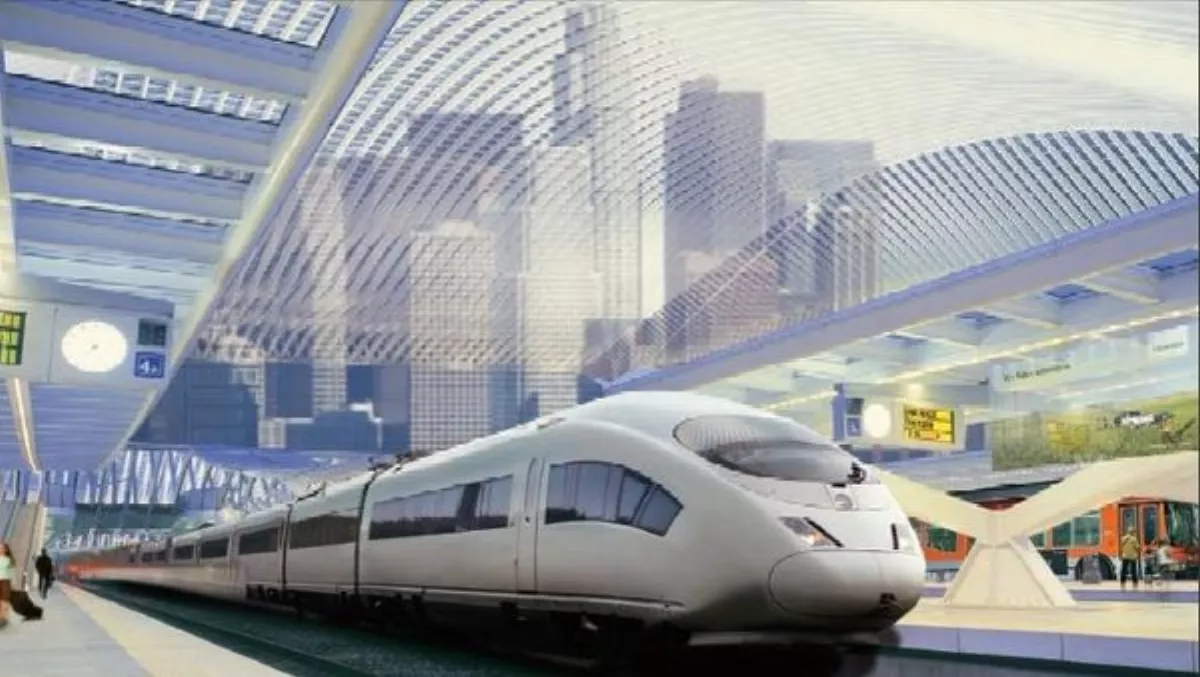Airplane travel may be a thing of the past if this invention ever comes to fruition. Designed by British scientist Robert Hooke in the 17th century, the Gravity Train proposes an alternative travel method allowing passengers to go from one end of the earth to the other in 42 minutes. The theory behind the gravity train is that it would work much like a rollercoaster. The train would require no fuel, using the sheer force of gravity to accelerate through a channel in the middle of the earth. During the first half of the trip, the downwards pull of gravity towards the centre would fire the train along towards its destination.
During the second half, its inertia would go against gravity, causing the acceleration to reverse directions and slow the train down as it neared the end of its journey.The train would allow passengers to get to and from anywhere in the world in roughly 42 minutes. The reason shorter distances would be equal in time to longer ones is because the train's maximum speed would be increased exactly enough to make up the difference. Since Hooke's musings in the 17th century, there have been some serious discussions around building a gravity train, starting with a proposal by the Paris Academy of Sciences in the 1800s and again by physicist Paul Cooper in the 1960s.
Of course, there are some obvious problems with the gravity train idea. First of all, the train's transit tunnel would bore through the earth's mantle, crossing a region where no known materials have been able to endure the incredible heat, pressure and melted rock. Secondly, friction losses would be extreme, which means the train would have to somehow develop enough horsepower to compensate. The biggest problem of all, however, would be constructing the massive tunnels in the first place.Although the gravity train is far from becoming a reality at this stage, scientists have not yet closed the book on this idea, and it is quite possible that some day we will have the technology necessary to bring it to life.
HOME ICT
This invention has a much better chance of becoming a reality in the near future than the gravity train. In fact, a prototype for Home ICT was developed by Japanese telecommunications company, NTT, and showcased at a "next-generation technologies” conference in August of last year. The concept is to merge all of your household devices and appliances, transforming your home into an almost living, thinking organism. The web of appliances would then be controlled by one unified "Home Gateway,” such as a cell phone or television, and all of the appliances and devices would work together rather than being controlled by separate remotes and functioning independently of one another.
So for example, if an earthquake were to occur, your house would actually notify you by displaying a warning on the television screen, while simultaneously and automatically turning off all gas mains in the house, closing the curtains and sounding an alarm. But Home ICT doesn't stop at safety.
Other applications would include crime prevention through lock confirmation from mobile phones and the ability to control keys, lights, sensors and home appliances from outside the home; energy saving through controlled energy consumption; entertainment through shared photos and videos across different devices; healthcare through the recording and tracking of daily health data and guidance from specialists; and one-stop support for any issues with your new home along the way.
Some scientists have taken this idea a step further, integrating day to day chores such as cleaning and cooking into the equation, essentially eliminating the need for maids and nannies or freeing up time for busy parents. This version of Home ICT is slightly further away in the future, but technology is rapidly taking steps towards making this smart home a mainstream reality.
